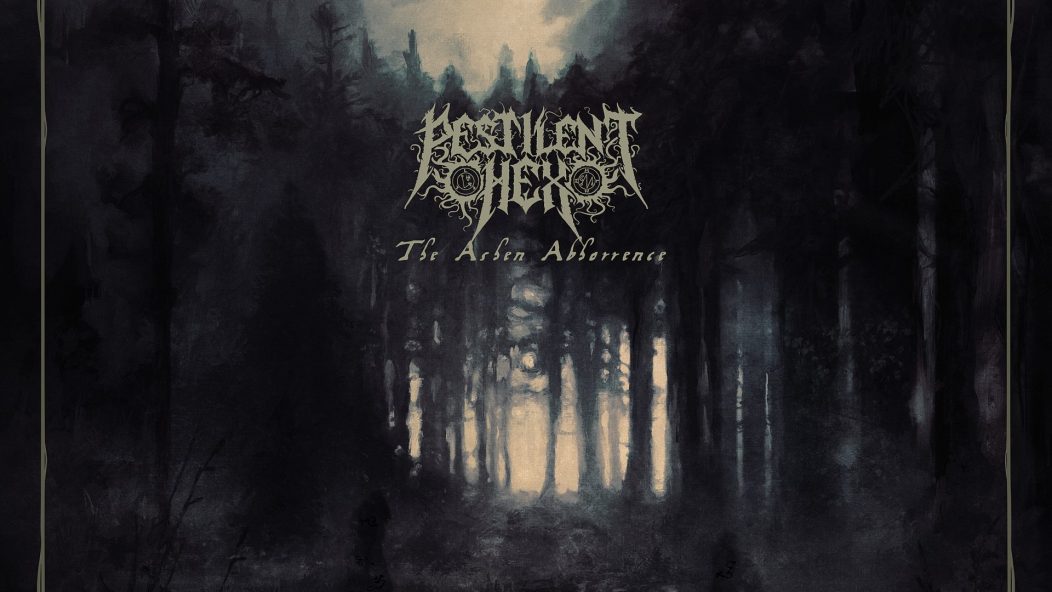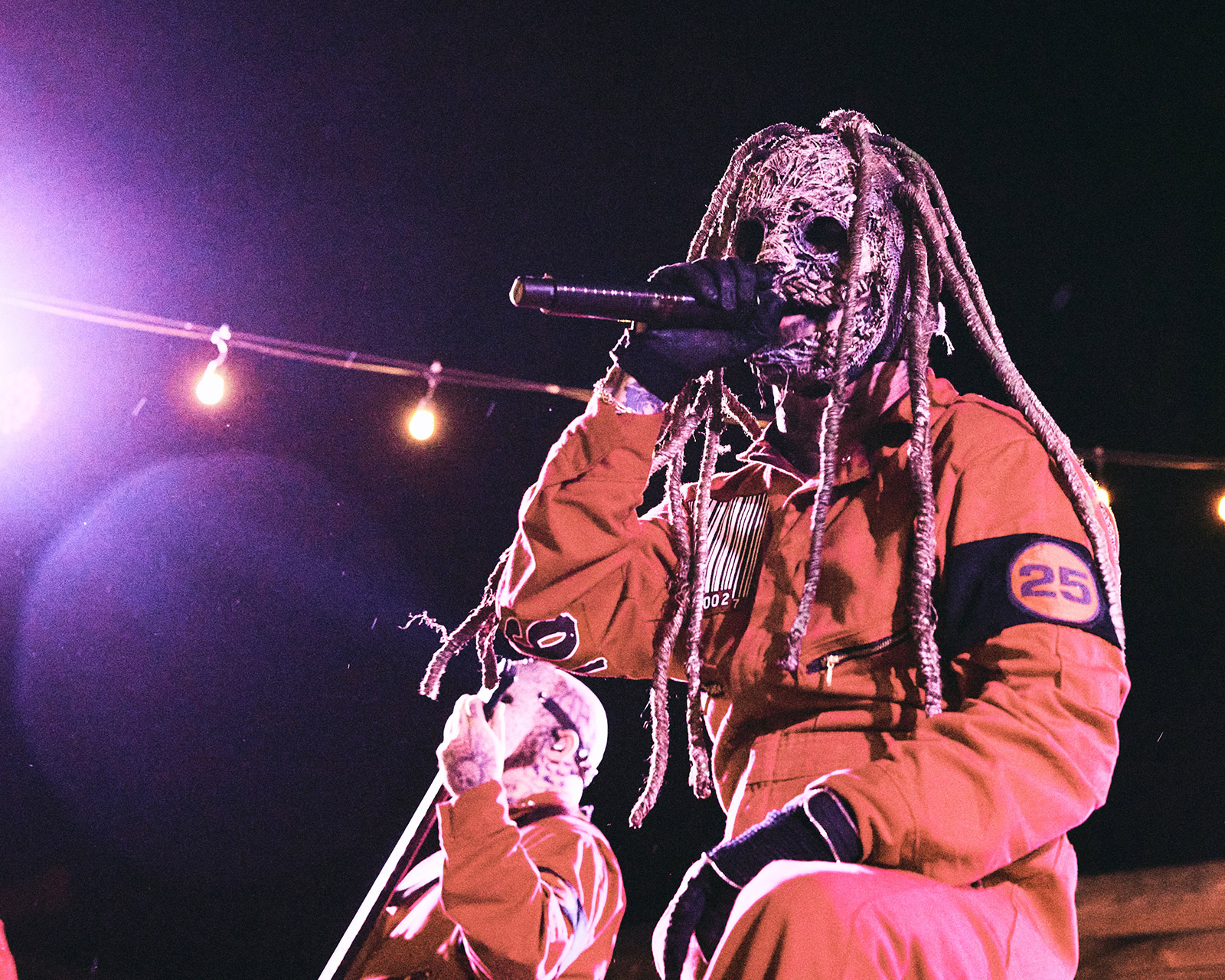
Pestilent Hex's "Chapter VI : 'Banishment'" Revives Mid-'90s Black Metal Glory
Symphonic and melodic black metal has been making a comeback lately. Whether it be due to the constant sharing of old Abigor pictures on Instagram or a select few semi-recent reissues, an interest in mid-’90s black metal extravagance has found a new home multiple decades later. Is there anything to complain about? Unless a notable release ends up a total stinker, not at all. This movement–which lasted from about ’95 to ’97–was one of black metal’s pinnacles, taking what was once ascetic and turning it on its head, making way for massive atmospheres and intriguing songwriting. Paying homage to this special period of time is Pestilent Hex, the duo of songwriter and multi-instrumentalist L.Oathe (Lauri “LL” Laaksonen of Desolate Shrine) and vocalist M.Malignant (Matti “MM” Mäkelä of Corpsessed, Tyranny, ex-Wormphlegm, et cetera).
On their debut record The Ashen Abhorrence, Pestilent Hex’s reverence to “the old ways” (rather than “nowadays black metal”–keep up) is more than apparent, but without the pitfalls of being a cover or “worship” band. Where many fail by stealing and appropriating Steinar Sverd progressions, Pestilent Hex’s ideas are fresh and merely dressed in older regalia. Bringing mid-’90s black metal melodicisms and all their glory to a new generation of listeners (or a nice listen to those who remember or were lucky to experience it firsthand), Pestilent Hex is a wolf in wolves’ clothing, offering a more modern (read as: cleaner, sharper) take on a classic style. Listen to an exclusive debut of The Ashen Abhorrence closer “Chapter VI : ‘Banishment'” and read an interview (featuring some classic zine-style antagonism) with L.Oathe and M.Malignant below. Prepare to hear some of the finest black metal you’ll experience this year.
…
…
The The Ashen Abhorrence press release names some black metal heavy hitters (Kvist, Arcturus, Abigor, et cetera) in a specific time period between 1995 and 1997. Was it your intent to pay homage to these artists, or was this sound more of an organic result of your songwriting process? What is it about this time period of black metal which makes it so special as to revive it decades later?
M: The period of ’95-’97 was the era when both of us got into black metal so there for sure is a certain sense of nostalgia, and even though with Pestilent Hex we are undeniably tapping into that sound – I see the band as a lot more than just a tribute to the soundtrack of our teenage years. Yes, this is us paying our dues to the bands & albums that formed our musical sensibilities from an early age, but crafting our own vision out of it.
This music has always flowed in our bloodstream, lying dormant for years to find the correct outlet to channel it through… and perhaps waiting and gathering the sheer will to do it as well as the bar we had set for ourselves was very high! Coming from a much more blunt expression to a more melodic one such as this requires some adjustment, and it exposes certain sides of us to the outside world that we have kept purposefully hidden. But once we allowed the gates to be opened it all felt very natural. There is also much more ambition behind this band than just a mere rehash of old ideas.
The bands mentioned (and you should definitely not forget the masterpiece Witchcraft by Obtained Enslavement from the list) are there to give you a frame of reference on what to expect from us, as this is a new band no one is yet too familiar with… But the references are not just a template we would blindly follow, the idea is to forge our own path through the sound that still haunts us to this day.
When composing orchestral music, how does the greater idea come to you? That is to say, how do you compose the individual parts in the VST orchestra and how do you create the larger musical texture?
L: Riffs & guitar melodies always come first and everything else is complementary. We do not aim for what one might call “realistic orchestration,” per se, but use synths and classical instruments to elevate the atmosphere and emphasize melodies and harmonies. Therefore we mix a lot of older synths and modern libraries in order to achieve the needed outcome, ambiance, without being limited too much on the rules of music theory and classical instrumentation. Greater idea – it formulates in my head while composing a song–and that’s it. I know what brushes and color to use and when. Pestilent Hex is a very visual band, not only on the surface level especially, but musically and in spirit.
Finland has a rich history in symphonic black metal and dark metal. Why do you feel your home country has been such a breeding ground for this type of music, and how do you feel Pestilent Hex fits into this greater history?
M: This is a question that pops up from time to time in interviews – why is Finland such a fertile breeding ground for dark music, be it Black Metal, Death Metal or Doom? I don’t really have the answer and I think an outsider might have a more objective perspective on the matter. All I can tell you is that the surroundings, mentality, history and culture are there to strongly support it. Darkness is in our nature – internal and external. Channeling that darkness into music/art and having a way to alleviate yourself from its oppression has also much to do with it.
How will this band fit into the greater history of Finnish Black Metal? Too early to say, really. We don’t sound typically Finnish, and are a new entity into the musical sphere, even though we’ve both been active in different musical outlets for a couple of decades already – only time will tell.
L: As stated above, we definitely do not sound like Finnish black metal in the sense it’s nowadays perceived. It is not something we’ve thought of actively, nor have aspirations of belonging to some bigger phenomena or sound… It would limit us, with the approach we have and I do not like limitations– and that has nothing to do with the quality of our BM scene which I respect greatly. Worth remembering is that there are and have been bands that do not fit into that framework like Thy Serpent’s early works for example that have greatly shaped the musical landscape 20+ years ago.
For LL: how does your approach for Pestilent Hex differ when compared to how you write music for Desolate Shrine?
For MM: you are generally known for the low vocals you employ in various bands (though Wormphlegm did feature some pretty putrid high vocals). What was it like working (almost) exclusively in your higher register? Did you have to adjust at all?
M: I think I started first doing vocals in the extreme metal context back in ’98 (a typical story, nobody else in the band wanted to pick up the mic and someone had to do it–so it might as well have been me) and it was indeed in the higher register and screaming style, so it was nothing really new to me. I adopted the lower growling style later, it’s all about context on which type of voice suits the music you are playing.
In Wormphlegm I utilized pretty much any vocal style I could and pushed it to the most extreme reaches but I have not done it to that extent in many many years, doing mainly backing vocals in my other bands, so some adjustments had to be made for sure.
So when approaching the Pestilent Hex material, I knew I could do it, but of course had my doubts and insecurities at first. Being the sole vocalist and not hiding behind my guitar was a challenge and it took me some time to gather the self confidence and adjust myself to this new role.
The album is broken into six chapters which leads me to believe this is a concept album. What is the greater concept surrounding The Ashen Abhorrence?
M: This is indeed a concept album, divided into six (hex) chapters where everything, artwork included, is woven together. If you narrow it down, essentially it is a ghost story. The lyrics are written in a journal-like fashion from the perspective of the writer and the story ventures into the occult, witchcraft and contacting the spirit-world… leading to hauntings, possession, sleep paralysis and the blurred lines of what is a dream or reality. In the background lurks the eternal faustian aspirations of man’s hunger for knowledge of worlds beyond our own.
Writing the lyrics took a long time even though the story I wanted to tell was there for years. I approach the lyrics from a very visual standpoint. Explaining it too much would take away some of the magic, but I am also fully aware that the story might not easily open up to the reader at first glance.
Is there anything specific you’d like to make clear about Pestilent Hex that you haven’t had a chance to say yet? What would you like to make clear?
M: One important thing to mention is that Pestilent Hex should not be seen as just a mere experimentation or a side project of death metal guys venturing into black metal. The reality is quite different and both of us have a long history with black metal. This band (yes–I intentionally diverted away from the word project) will not be a “one off” thing either. The first album took some years to complete, but now as the gates are open and our cooperation is very fruitful, there is much more to come. This is just the beginning. We have worlds to show you.
…
The Ashen Abhorrence releases July 8th on Debemur Morti Productions.










